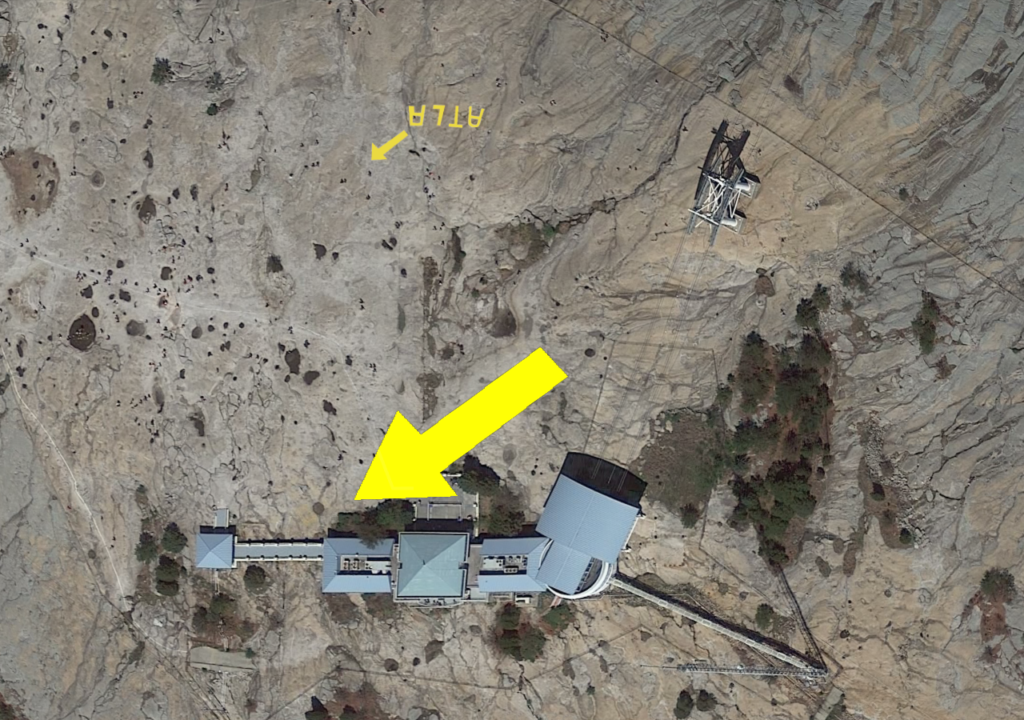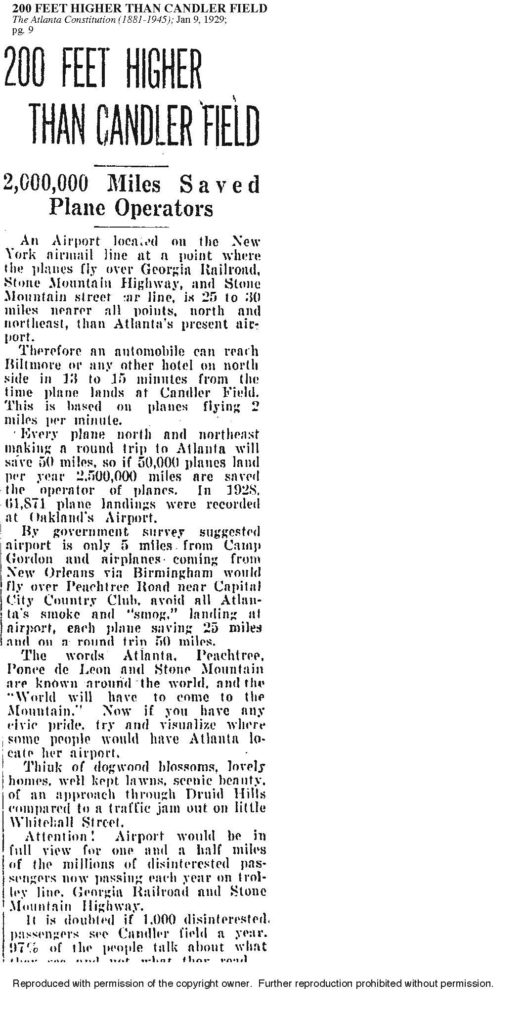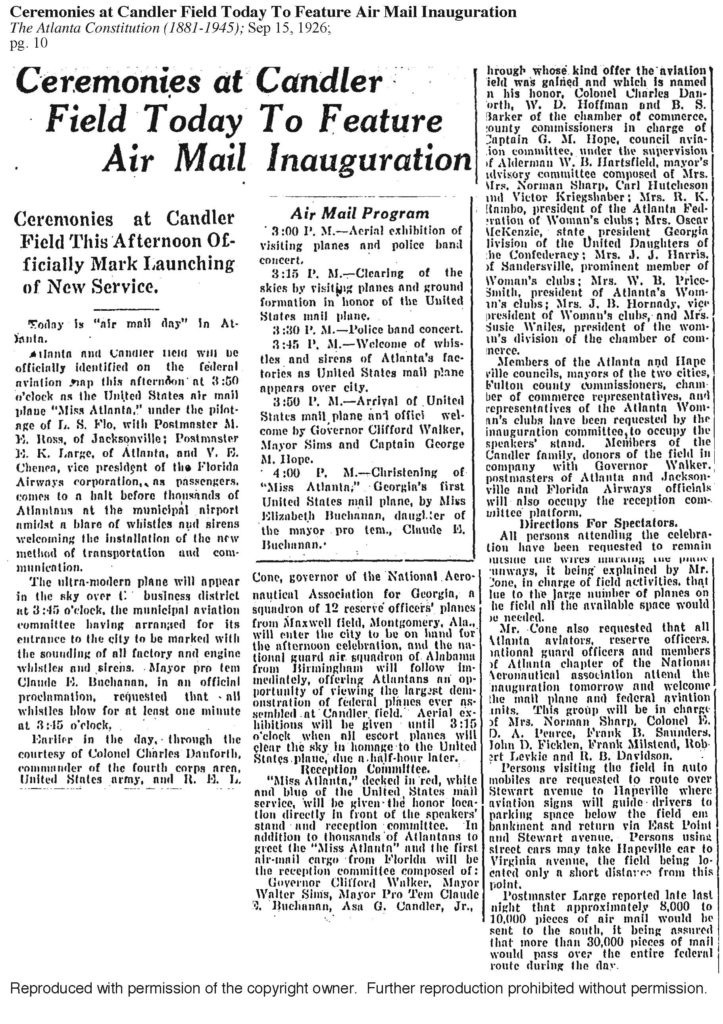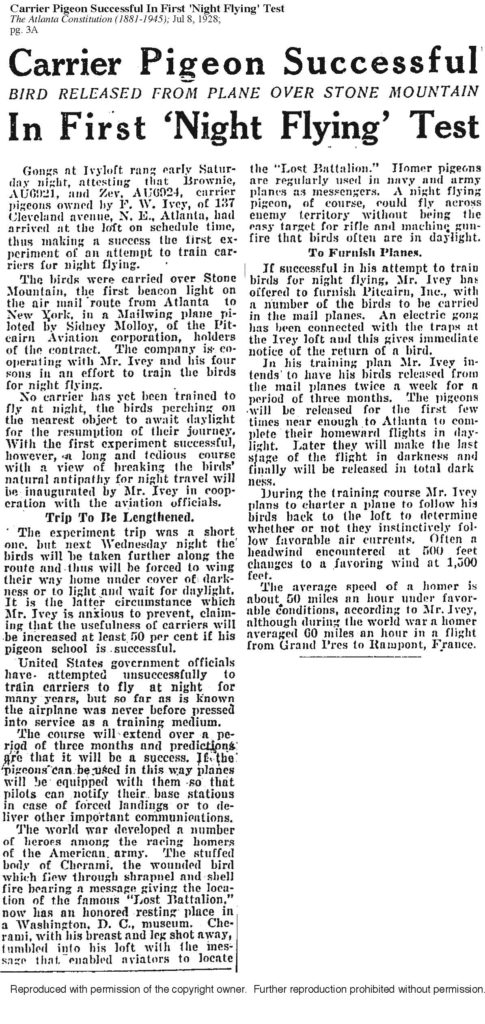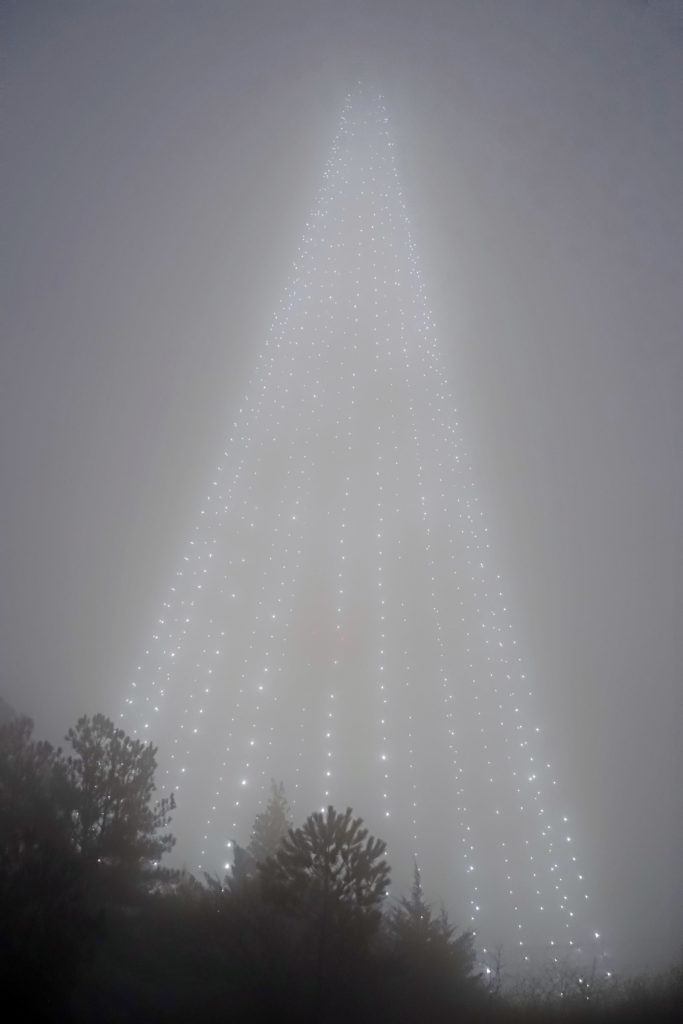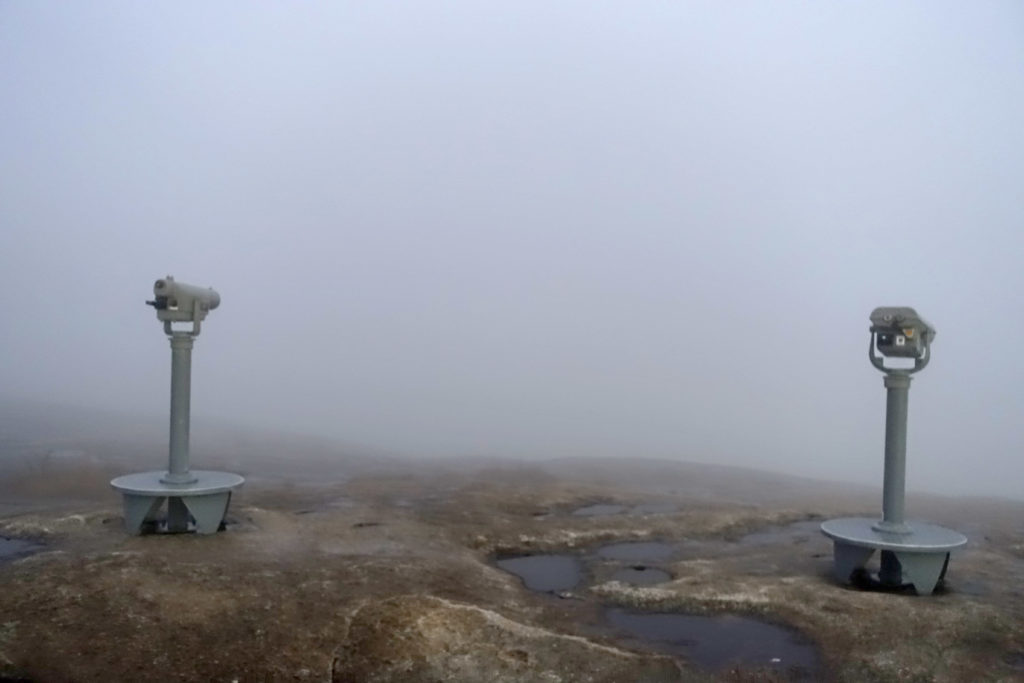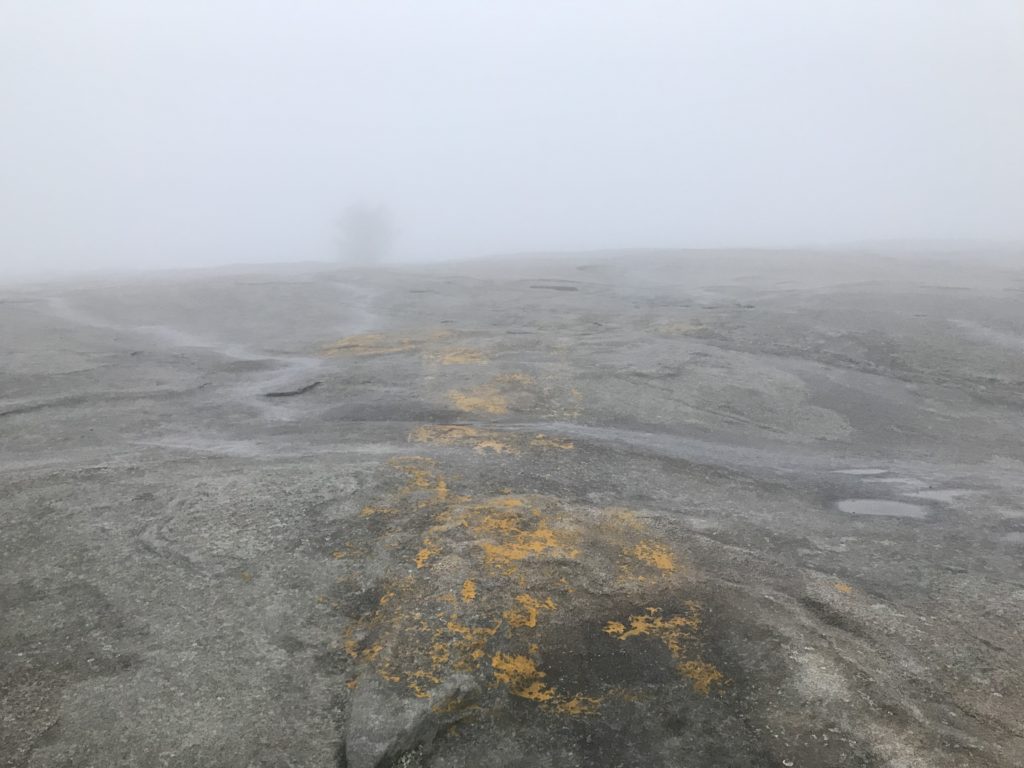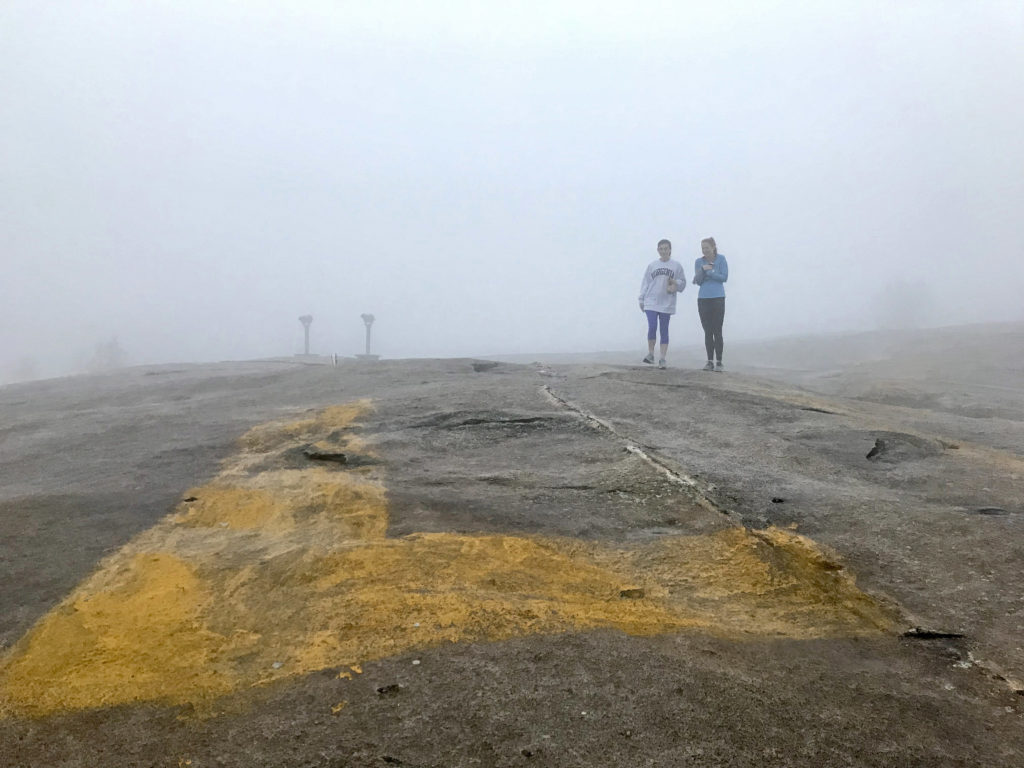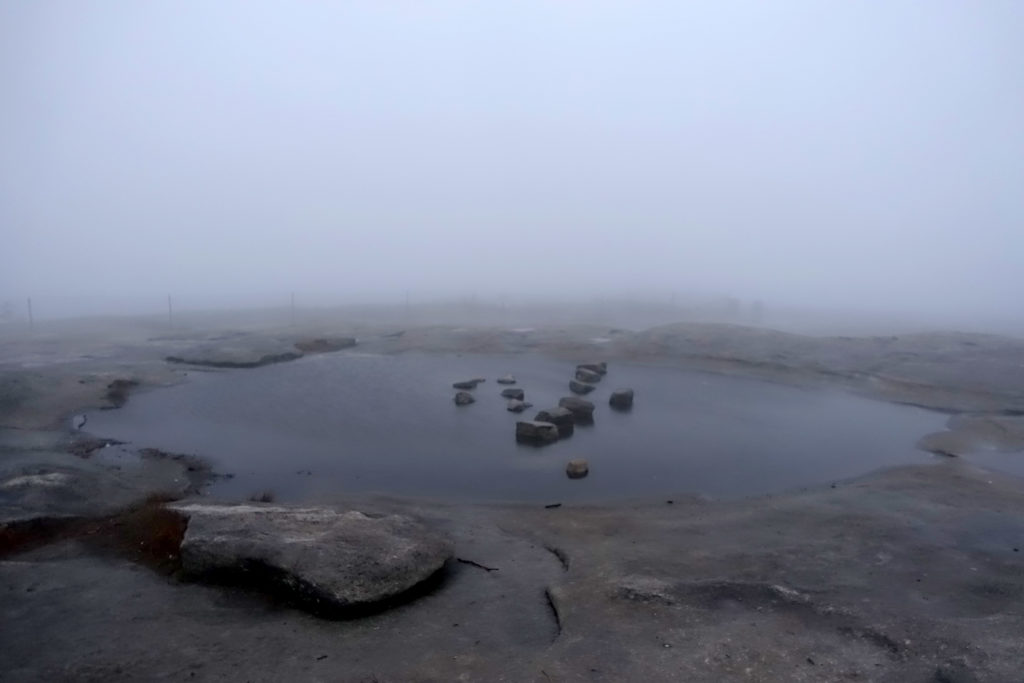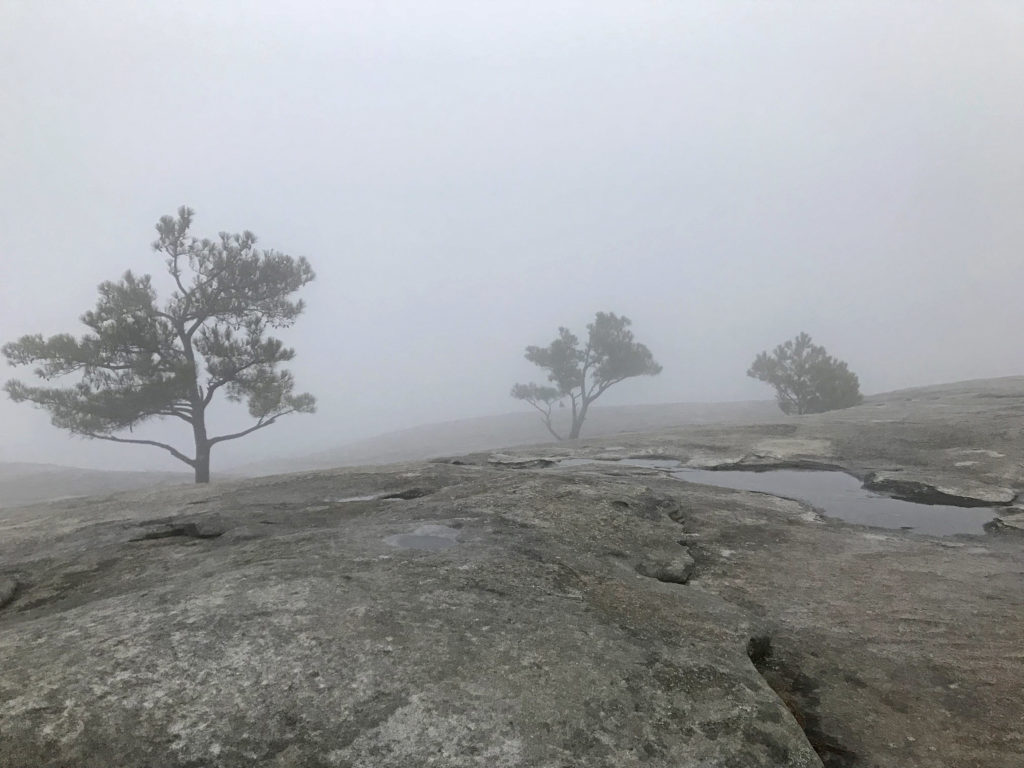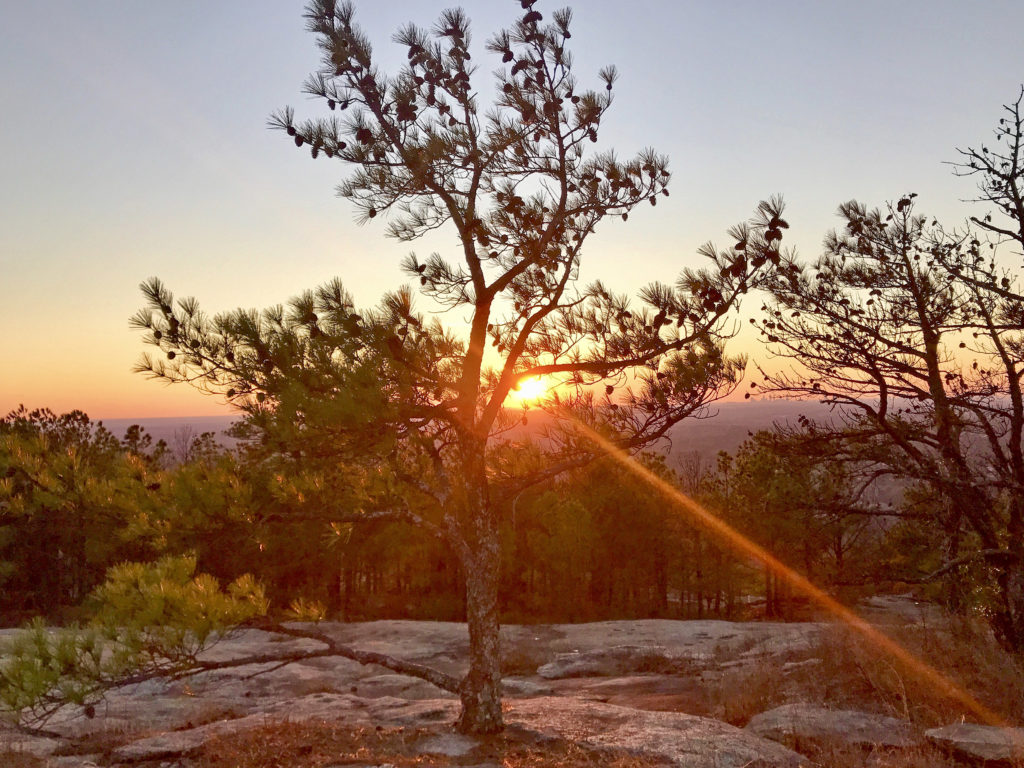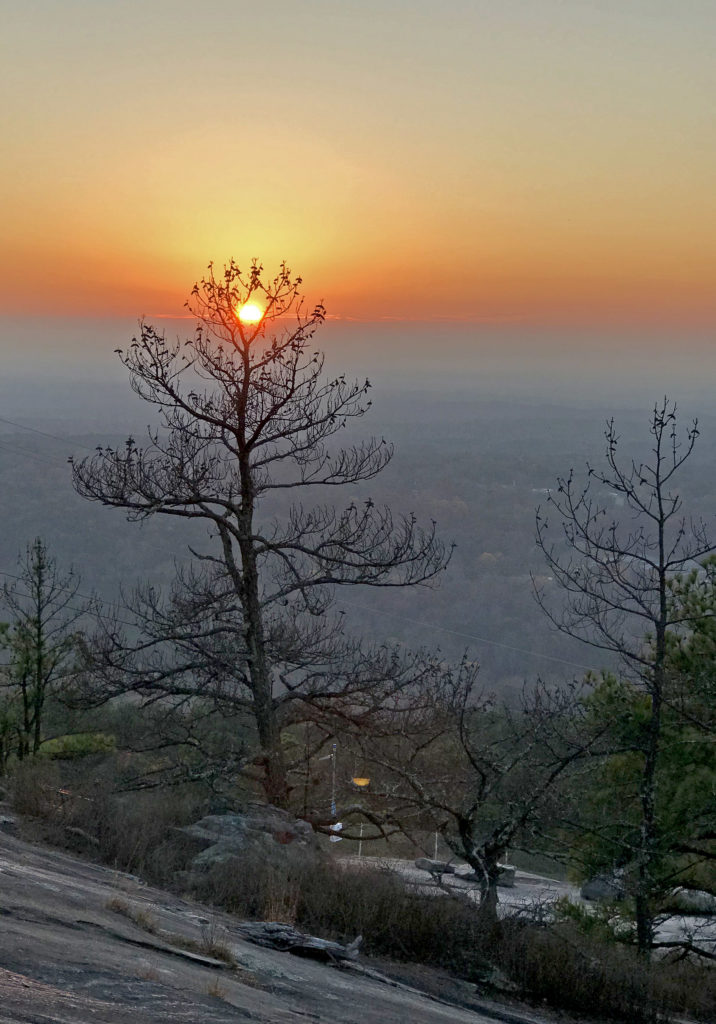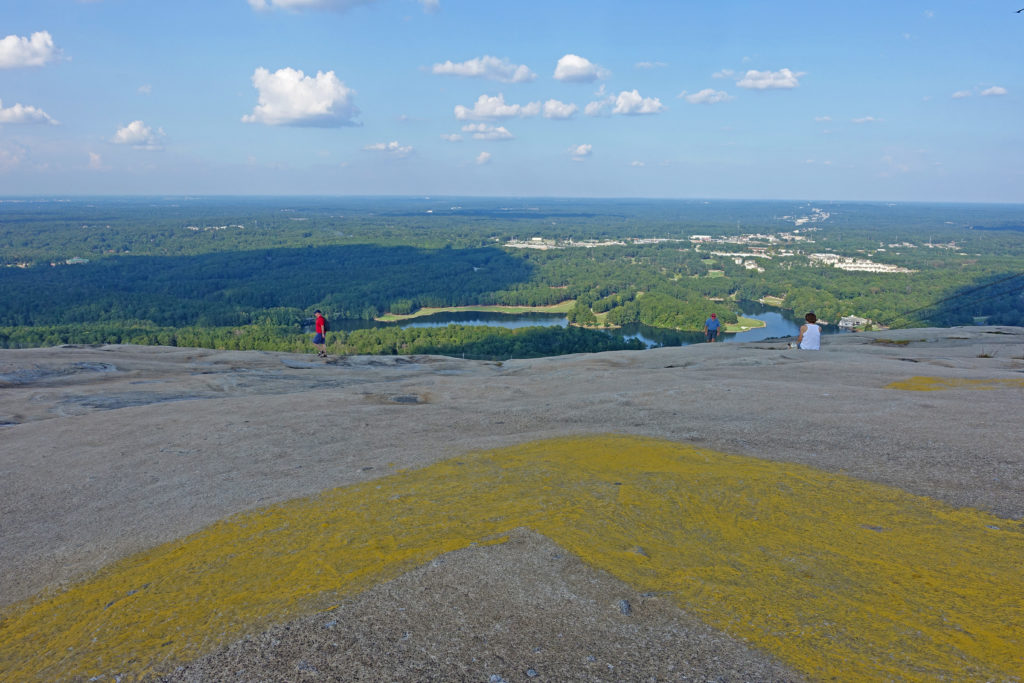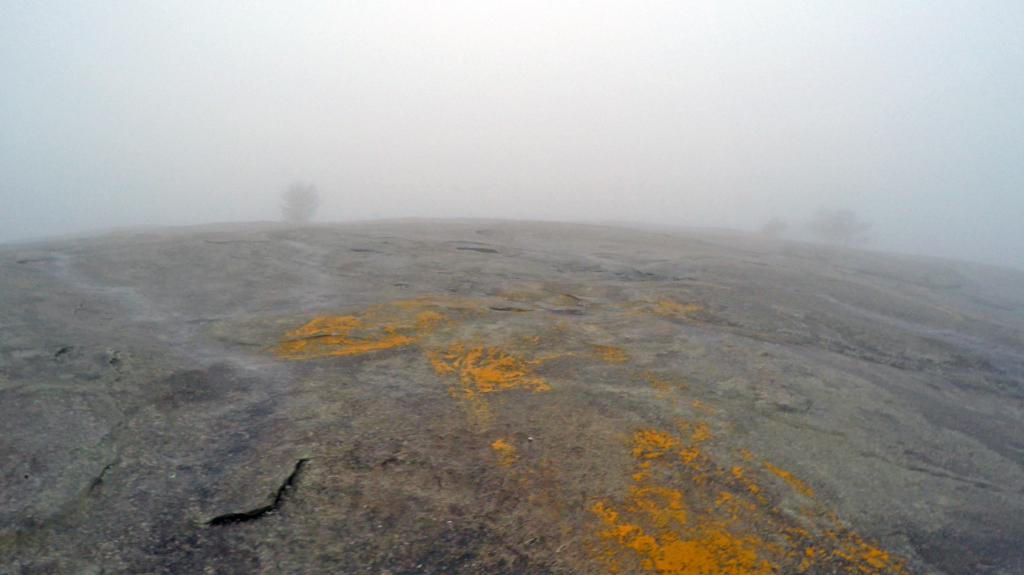 Midwinter’s first light was hidden by a cloudy suspension this morning, and the group from the outdoors club I'd seen down in the parking lot so eager at 6:30 am now shuffled somewhat disappointedly down the mountain not long after the 7:37 am sunrise. I, too, love when the Sun offers its radiant best on the longest and shortest days of the year, especially if I rose early anticipating its arrival, but I still luxuriated in the brooding mist wrapped around the mountain like I was a Brontë strolling along the moors or as if a distant, wispy Hibernian ancestor of mine was passing like a ghost through the foggy Wicklow mountains.
Midwinter’s first light was hidden by a cloudy suspension this morning, and the group from the outdoors club I'd seen down in the parking lot so eager at 6:30 am now shuffled somewhat disappointedly down the mountain not long after the 7:37 am sunrise. I, too, love when the Sun offers its radiant best on the longest and shortest days of the year, especially if I rose early anticipating its arrival, but I still luxuriated in the brooding mist wrapped around the mountain like I was a Brontë strolling along the moors or as if a distant, wispy Hibernian ancestor of mine was passing like a ghost through the foggy Wicklow mountains.
And even though Atlanta's 2017's summer and winter solstices were both rainy and overcast, the light was still there even if we could not see it. Invisible but no less powerful, just as it was was during August’s solar eclipse. Plus, inclement weather found many ways to surprise and reward me this year. Granted, much of what we might notice by virtue of the light won’t always be as spectacular as those three rainbows I saw in under a week in early November. And sometimes it’s actually the absence of bright, saturating light on a drizzly, gray day which reveals something suddenly made more colorful. There's sometimes no telling just what will light one's wick and keep it burning.
I gave a commiserating wave to the group of hikers and reassured them that the actual solstice would really occur at 11:28 am and turned back to the two young women I’d just met while making small talk about whether the sun was going to show. Home for the holidays, Marisa, 19, and Hannah, 20, attend the University of Virginia, haven’t declared majors yet, and had not climbed the mountain in years—since they were kids!
We happened to be standing next to what appeared to be the remnants of the old chrome yellow flight arrow that was once painted on top of the mountain to guide airmail planes to Candler Field before the installation of an official U.S. flight beacon on top of the mountain powered by millions of electric candles (see articles below). The arrow also literally marked the mountain as a major landmark for pleasure flights flying over it, and it used to be regularly repainted through the years by the Dekalb County Jaycees up through the early 1960s. Owing to today's weather, those yellow patches and partial arrowhead were the most illuminated areas between the sky and the mountain this morning besides the Christmas tree of strung lights glowing ethereally at dawn.
“Wow, I learned something new!” said Marisa — and she genuinely meant it! As we made out the letters A-T-L, the three of us practically squealed as if we'd seen that luminous orb in the sky at sunrise after all. I wasn't exactly trying to sound twice their age (or half my own) but think I succeeded when I excitedly began telling Marisa and Hannah all I knew about the flight arrow, the flight beacon, and Atlanta’s inauguration of air mail over 90 years ago. One day they too would care about such things, I assured them jokingly.
I told her that most people actually aren't aware of the flight arrow or the mountain’s role in postal and flight history and confessed that I'm still piecing it together myself (other history related to the mountain has often gotten left out of the mountain's narrative or is not put forth at Stone Mountain Park, either, as I suspect it has nothing to do with the Confederate carving or "theme," itself lacking proper historical context at the park). The flight beacon has not been operational at the mountain for many years now, but its existence is documented in historic aerial maps, as is the clear image of the flight arrow that spelled ATLANTA up through the early 1960s. There is a lot more to this story, of course, since flight infrastructure is involved, and many familiar names in Atlanta history, such as Venable and Candler, had their hands not only in the construction of highways and roads in Metro Atlanta but also up in the air as well—and, let's not forget, their hands were in theme parks like Stone Mountain Park, too.
 My serendipitous encounter with the two UVA students near the yellow flight arrow on the mountain reignited my interest in my earlier research about it, and as soon as I returned home I began putting down thoughts. And it will surprise no one who reads this post that I keep returning to author Hannah Palmer's Flight Path, which has been on my list of books to read for awhile now (and listed on this site's Reading Shelf). With such a similar reckoning with our hometowns being so changed when we return from New York, I confessed to her this fall that I haven't read it yet if only to keep my own ideas and voice hermetically sealed from such similar terrain. With Stone Mountain being directly on that path, though, it's clear I will simply not be able to resist reading it very much longer!
My serendipitous encounter with the two UVA students near the yellow flight arrow on the mountain reignited my interest in my earlier research about it, and as soon as I returned home I began putting down thoughts. And it will surprise no one who reads this post that I keep returning to author Hannah Palmer's Flight Path, which has been on my list of books to read for awhile now (and listed on this site's Reading Shelf). With such a similar reckoning with our hometowns being so changed when we return from New York, I confessed to her this fall that I haven't read it yet if only to keep my own ideas and voice hermetically sealed from such similar terrain. With Stone Mountain being directly on that path, though, it's clear I will simply not be able to resist reading it very much longer!
I also mentioned the flight arrow to Hannah Palmer then and emailed a photo of what I believed were partial remains of the flight arrow on the mountain from October, and when I expressed wanting to find an actual image of the arrow spelling out ATLANTA, she so kindly pointed me to Historic Aerials. I have since been completely geeking out on topographical maps like I never thought possible. As she wrote a book called Flight Path, I also found it a nice coincidence (even though she only married into the Palmer surname!), that one of Atlanta's historic buildings, Palmer Building, had a flight arrow and the words ATLANTA on its roof at one time!
1960 aerial view of flight arrow on top of Stone Mountain 
After sharing the historic aerial image of the flight arrow here, my friend Bryan Feldman over at Stone Mountain Guide.com took it several steps further by comparing the yellow area Marisa, Hannah, and I had seen at sunrise with current satellite images of the mountain. He was able to illustrate that the three of us had in fact seen a secondary fading yellow arrow with the letters A-T-L-A which also points to the airport and clarify the exact area where the swaths of yellow from the large historic flight arrow that spelled A-T-L-A-N-T-A can still be seen today directly in front of the buildings on top of the mountain.
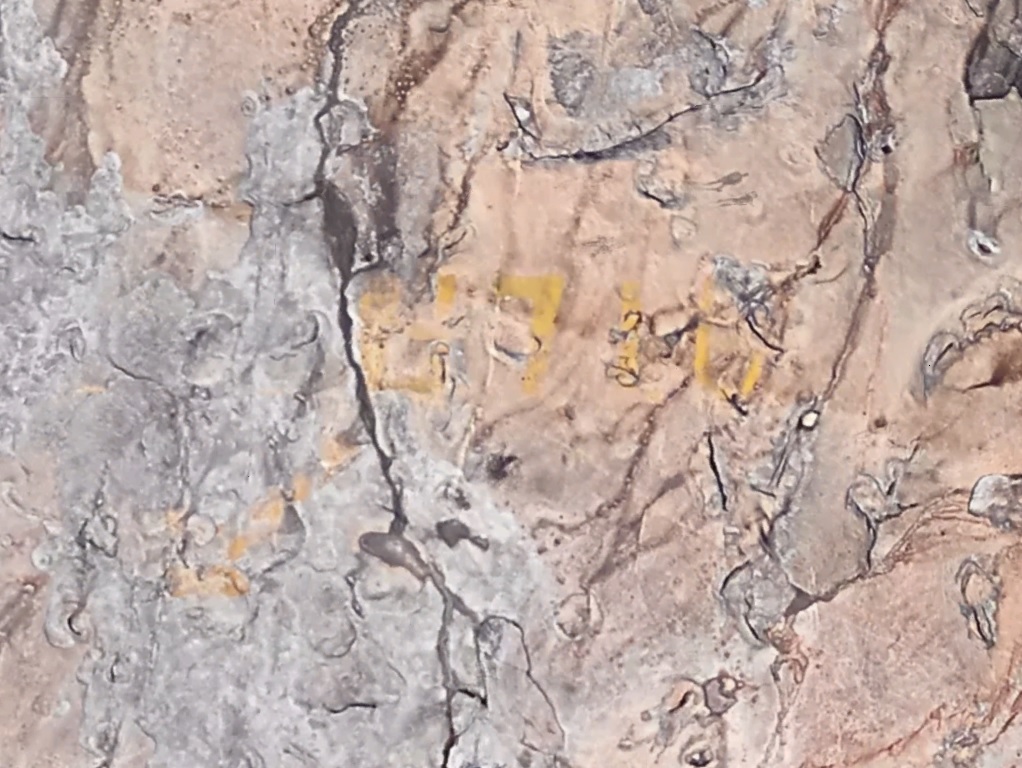
Remnants of the secondary flight arrow on top of Stone Mountain 📸Google Earth


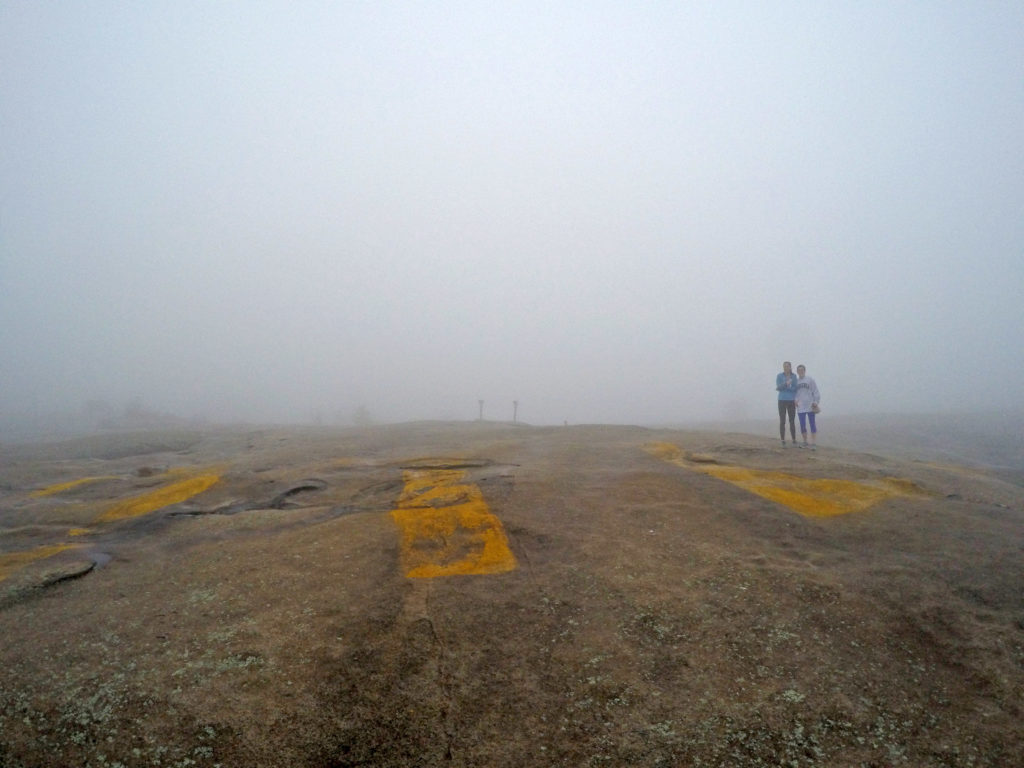
 Google search | Kay Mullinax with the Stone Mountain air beacon c. 1950s
Google search | Kay Mullinax with the Stone Mountain air beacon c. 1950s
